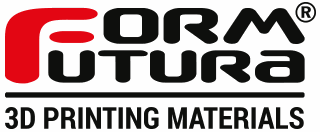Sustainability
In today’s world people have become, and still are becoming, more aware of the fact that we need to find a balance between our social- and economic welfare and the environmental impact of our welfare. Population- and economic growth have put pressure on the environment by overconsumption of natural resources. There needs to be a productive balance between our consumption of natural resources and economic/population growth. Sustainability is the way to find this balance. The principle of sustainability is that all elements that we need for our existence and welfare are (in)directly determined by our natural environment. Therefore we need to be in harmony with our environment in order to warrant the well-being of present and future generations.
3D Printing & Sustainability
At Formfutura we truly believe that desktop 3D printing can have a major contribution in creating a more sustainable society. Please see below some eye-openers with respect to the possibilities desktop 3D printing brings when it comes to sustainability.
Less waste
By making use of Fused Filament Fabrication (FFF), desktop 3D printers extrude the filament layer-by-layer onto the printer bed and the filament is fused together to build an object. So, by making use of FFF technology desktop 3D printers built objects from nothing and by adding successive layers upon each other, meaning there is no waste of filament when creating an object, as opposed to more traditional mass fabrication methods where objects are carved or stamped out a larger piece of material.
Less emission of carbon dioxide (CO2)
Desktop 3D printers take their input from digital computer aided design (CAD) files, which can be transferred electronically to any location in world. This makes it possible for objects to be printed out exactly where they are needed. This could potentially lower the emission of carbon dioxide significantly as products do not need to be shipped all over the world from the factory where they are produced to respectively distributers, wholesalers, local stores and eventually to the end-user.
One machine for all your creations
A desktop 3D printer can make almost anything within the dimensions of the printer. So, only one machine is needed for making many different creations instead of creating specialized machinery for each object you want to make.
Repairing & Upcycling
Desktop 3D printing makes it possible for one to repair one’s utensils by printing a small part of the utensil that is not readily available from the manufacturer. This will increase the lifetime of a utensil which could have otherwise been thrown away. Think about parts of utensils as: the battery cover of your remote control, your cellphone cover, a button of your dishwasher, the handle of your washing machine, the hinge of your wardrobe, the cover of your electric housing, the ash-tray of your car, the lost sealing cap of your air mattress, etc…
Another sustainable opportunity which arises with desktop 3D printing is upcycling. Think about printing items which can add new functionalities to existing objects and by that extending the lifetime of those objects (especially for objects that you were about to throw away).
3D Printing Filaments & Sustainability
Regardless of the filaments used, desktop 3D printing and its FFF technology can contribute to a more sustainable future. However, your choice of filament can also contribute to a more sustainable environment in the future. The two most common used thermoplastics for desktop 3D printing nowadays are ABS and PLA.
ABS (or Acrylonitrile Butadiene Styrene in full) is a thermoplastic which, as its name implies, is produced by the polymerization of acrylonitrile, butadiene, and styrene. ABS is produced from fossil fuels, meaning that it is not biodegradable and has a greater environmental impact than PLA for instance.
PLA (or Poly-Lactic Acid in full) on the other hand is a thermoplastic which is extruded from the starch of plants, such as corn, cassava, sugarcane, cereals, or sugar beet. By being derived from biological resources this type of thermoplastic can be biodegradable under the right conditions (such as an active compost heap, with enough presence of oxygen) and therefore has a much lesser environmental impact than thermoplastics derived from fossil fuels.
Both thermoplastics have their own specifics with respect to impact strength, density and melting temperatures, meaning that it is up to the user to decide which thermoplastic suits its design best. However, please always keep in mind that PLA has a lesser environmental impact and therefore, that whenever the situation occurs that both thermoplastic’s specifics are suitable for your design, PLA is always the most sustainable option.
